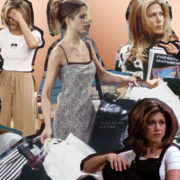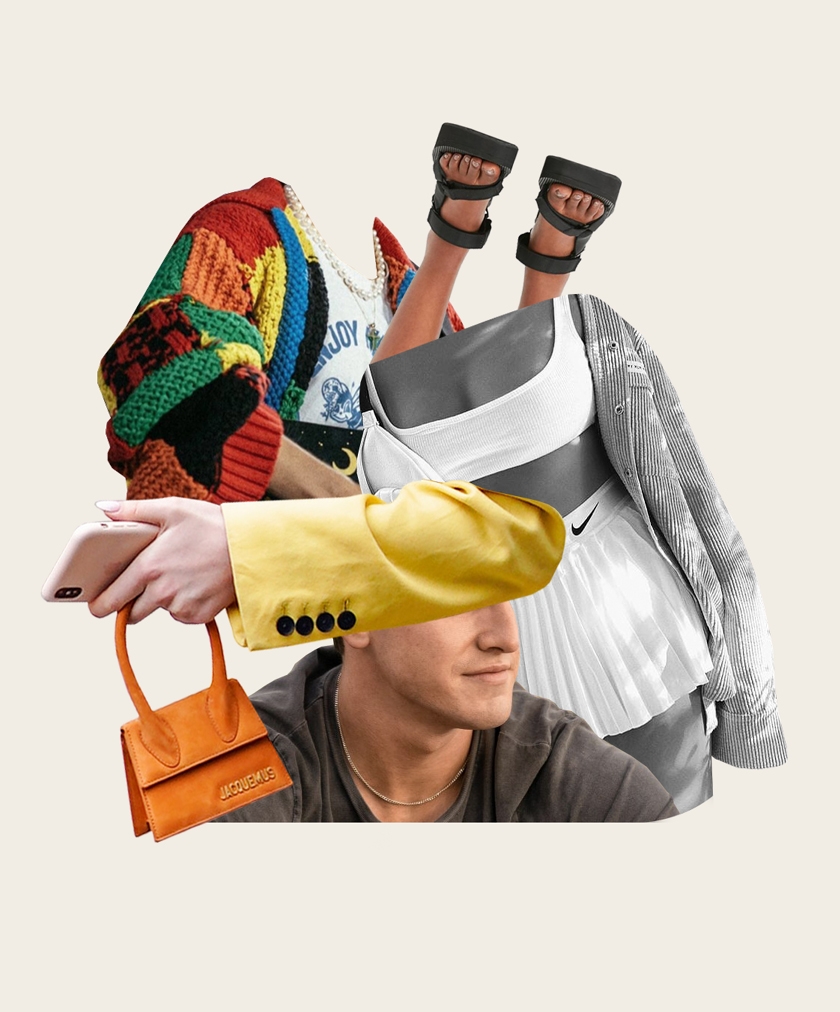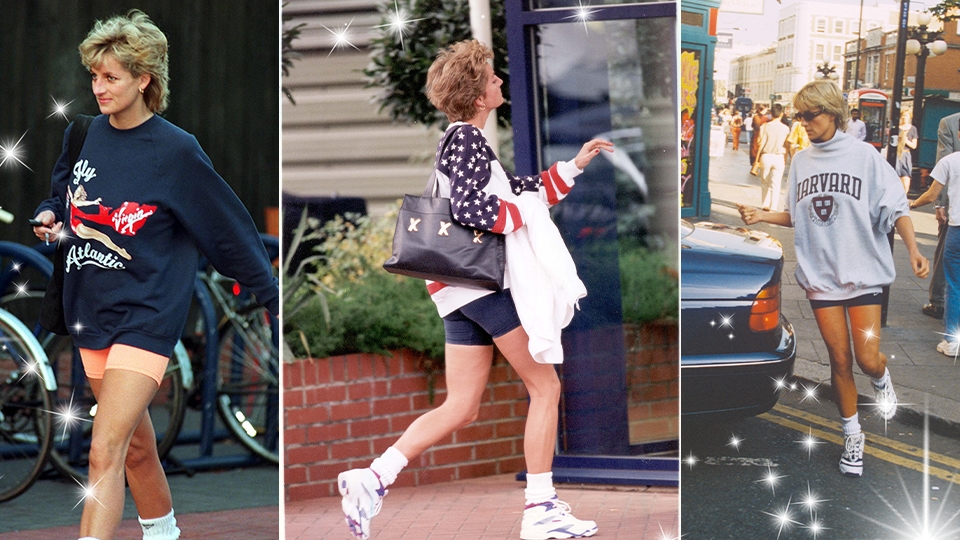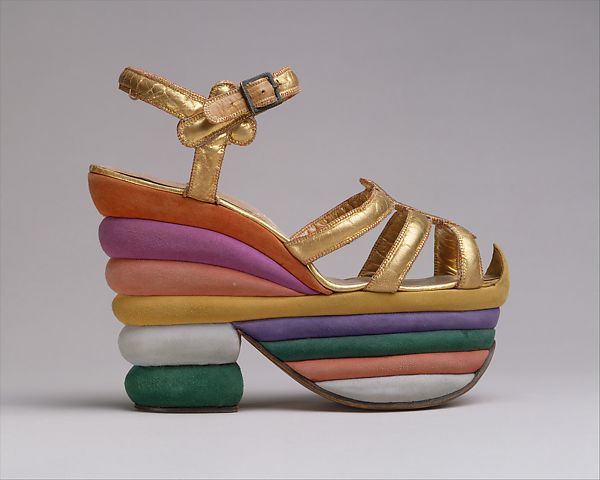Do you know what you’ll be wearing in twenty years? We do: the ins And outs of trend recycling

By Charlie Elizabeth Culverhouse
New trends are always emerging – always. It often feels impossible to keep up with what’s popular and what is ‘soo last season’. While we label these ‘new’ trends, they are often modernisations or reinterpretations of a trend we have already seen. Fashion is cyclical, meaning fashion trends come into fashion and go back out of style in a never-ending cycle. There are many different cycles that aim to break down the resurgence of nostalgic styles but, for us right now, the 20-year-cycle is the most relevant.
The 20-year cycle is the most referenced concept in the fashion industry. The rule states that whatever styles are popular now, will be popular once again in a mere 20 years – more or less. Trends come back with a modern interpretation. Changes are made to iconic styles making trends from days-gone-by more appealing to younger generations and contemporary consumers.
Trends repeat in this cyclical nature for various reasons; the standout being nostalgia. Fashion designers must pull inspiration from somewhere and, while we all love to look forward, looking to the past is often the starting point for many new fashion pieces. There is something familiar and comforting about looking back, whether it be remembering styles adorned by parents or calling back to iconic outfits photographed on celebs from days gone by. Fashion is a huge element in bringing both designers and their consumers back to certain times in their lives. Emulating the positive emotions associated with this time is exactly what fuels the 20-year-cycle.
There is also the obvious fact that when trends eventually come back around, the current generation are seeing these looks for the first time. The modern reinterpretations have the upper hand of cherry picking the best aspects of these nostalgic trends and leaving out the embarrassing ‘can’t-believe-we-wore-that’ pieces; for example, the Y2K comeback has conveniently glossed over the skirts and dresses over jeans look – thank god.

There are five stages to any fashion cycle, no matter how long it is: the introduction, the rise, the peak, the decline, and the outdated.
The introduction is pretty self-explanatory – a new style is introduced at a fashion show or in a storefront. As people start to wear the new style it rises in popularity – you’re seeing it on celebrities and the cool Instagram girls are sharing it with their followers. The trend then continues to spread and will eventually hit its peak, this is when ‘everyone is wearing it’ and when fast fashion companies start pedaling out their own version of the style. Inevitably, people begin to get bored or tired with the style as time goes on. The trend starts to decline in popularity as it becomes over worn, too common, and eventually the trend is actively disliked and labelled ‘out of style’. For the next 20-or-so-years, the style is forgotten about as people turn to newer trends to fill their wardrobes. Two decades later, the clothes they’ve left behind are back in style and people find themselves surrounded by trends they once thought were forever out-of-style.
Another way to look at trend cycles is through Laver’s Law. He states that when a trend is in fashion, it is labelled as ‘smart’ but one year before this, it is ‘daring’. 20 years later it becomes ‘ridiculous’ before hitting it’s 50-year mark and creeping back into style. This rule follows the same ideal as the 20-year-cycle, only now we’re clearly getting through the stages a lot quicker.
Trends can now quickly reach overexposure, so we’re seeing more and more new trends following each other in insanely quick succession. Social media has increased the speed at which trends spread and catch on and, factoring in fast fashion’s quick turn-around, trends are more accessible than ever. This accessibility, while coming with its obvious pros, inevitably increases the speed of the fashion cycle. The trend cycle will forever continue to spin because trends function exclusively to make us feel as though we are missing out – we participate in wearing trendy items to create a sense of belonging.

Not all trends follow the 20-year-cycle exactly. Designers pull from any decade that they are inspired by and believe will fit into the fashion world of today. Fashion cues are taken from prints and silhouettes, borrowing from the past as opposed to dressing in it from head-to-toe. Recently we’ve been seeing the return of puff sleeves and oversized statement bows, a nod to the fashion design of the 80’s. Thankfully we’re not seeing these accents on their traditional 80’s-esque prom style ball gowns; instead, more modern, fitted mini dresses are being accented with the 80’s style to keep the pieces desirable to the 21st century buyer.
When looking to the past for inspiration, it’s about extracting elements that make sense in the context of today rather than creating carbon copies of styles from the past. Decades gone by are looked at through rose tinted glasses and you have to be far enough away from the time you’re pulling from to have the ability to do this – this idolisation of the yesteryear fuels nostalgia. So, while we’re not going to be running round in Elvis-esque jumpsuits anytime soon, the style has been brought back via a toned down, modern interpretation.
Sometimes, a trendy piece can be so good and so practical, it transcends into the realm of a staple. These become classic pieces, timeless outfits that we can always fall back on – circa the look popularised by Princess Diana; oversized sweater, bike shorts and chunky trainers. No matter the generation, this look will forever be worn and will forever be iconic.

It’s not just fashion that moves in a cyclical nature; movies, TV shows, music, technology and even furniture styles are just some of the cultural products that too come and go in a cycle. They all tie together and induce the recurring cycles of one another in a sort of butterfly effect. As older movies and shows become popular once again, they influence the new audience to adopt aspects of the characters’ fashion into their wardrobes – not only is the show popular once again, but so is the fashion of the show’s time. The best example of this phenomenon is obviously Friends, with Rachel re-popularising pairing dresses with sneakers, and Monica’s classic high-waisted jeans and Keds combo coming back into style 20 years after the show’s ending.
There are of course other factors contributing to the coming and going of fashion trends – one of the less ‘fashionable’ being the economy. It makes sense that in times of economic hardship fashion trends change as people can’t afford to keep up with trends in ways they used to, but the ties between fashion choices and economic state are far more intertwined than first appears.
Historically in times of hardship, women have worked out ways to keep themselves looking and feeling their best without having to shell out a bunch of cash; one of the most famous being women experiencing wartime rations drawing lines on the back of their calves to imitate expensive stockings. But perhaps one of the most shocking, yet most telling, links between fashion and the economy is the height of heels.
When the economy goes down, the heel goes high. Heel heights noticeably grew during the Great Depression of the 1930s, the oil crisis of the 1970s, and when the dotcom bubble burst in the 2000s. There is over a century’s worth of evidence for this phenomenon and only one explanation – escapism.

Using fashion as a means of escapism is something we’re all extremely well versed in thanks to the past years events visa vi spending hours deciding what to wear to the living room. Turning to flamboyant styles in times of hardship by increasing the heel height of shoes, gives people the opportunity to forget, or at least diminish, the harsh realities they face. This theory is so strong and the evidence so convincing, that not only do fashion brands look to economic trends to plan heel heights of upcoming collections, but governments and companies look towards the interest in heel heights to monitor possible unexpected changes in the economy.
At the end of the day, trends were created to keep us spending money. They keep us thinking we need to buy into new styles to stay in the loop. That doesn’t mean trends are all bad, if you like something then wear it! Trends can push us forward, make us feel sweetly nostalgic, and connected to people from across the globe. Like every aspect of our lives, fashion is ever-changing and that’s what makes it so exciting.
Discover more from GUAP’s Fashion section here

